Macro Calculator
This free, easy-to-use macro calculator gives you your optimal macronutrients and calories. It’s a weight loss or muscle gain calculator for both women and men.
Combine with macro counting or flexible dieting to reach your goals faster.
Now what do I do with my macros?
Our comprehensive macro-based fat loss program shows you what to do. Learn more
How do macros work?
The foods we eat are made up of three macros (macronutrients). These are carbohydrates (carbs), protein, and fat.
Chicken is high in protein but has no carbs; rice is high in carbs but has very little fat or protein. The three macronutrients provide the body with energy and raw materials for growth and repair.
By calculating the appropriate daily calorie amount for you, we can then break this down into the best macronutrient ratios to achieve weight loss.
Basic steps for macro counting
- Enter details into the calculator
Make sure to choose the correct goal. - Take note of your calories and macros
These will be the targets you are aiming for each day. - Track your macros
Use an app or pre-plan your meals. - Measure results
Don’t use basic weight scales.
Use proper body composition scales (we recommend Renpho) to measure fat and muscle mass changes.
What is a good macro ratio for fat loss or muscle gain?
Your macros should be based on your Total Daily Energy Expenditure (TDEE) and goals.
The calculator defaults to the best macro ratio proven to work for most people.
This ratio is:
- 30% fat
- Protein is 0.65 grams per pound of body weight,
- The remainder is carbs.
Depending on your goal, this will be either a calorie deficit or a surplus.
You can go further and make more adjustments: Perhaps you’re an extreme endomorph and do better with fewer carbs. Or perhaps you have one kidney and need to eat less protein.
You can fine-tune your results with a bit of math. See how to change your macros here.
What is a good protein ratio?
Rather than a percentage, proteins are based on your body weight. Our calculator has three settings:
- Moderate adjusts the ratio to 0.65 grams per pound of body weight.
This is appropriate for sedentary individuals or people with higher body fat percentages. - High is for active people with moderate strength training and an average body fat percentage.
- Maximum will set the ratio to 1 gram per pound.
This amount is good for bodybuilding and gaining muscle mass. You must be doing intense training.
Find out how to fine-tune your protein ratios when counting macros
Fat macro ratio
Set fat at 30% of daily energy expenditure.
Most people do very well with this amount of fat. See more about choosing the best macro fats. Because of high-fat diets like keto, many people are now eating more fat than they need to.
Carbohydrate macro ratio
Once you’ve calculated protein and fat, the remainder of your daily calories should be from carbohydrates.
Carbs fuel your body and workouts – and are the body’s preferred energy source.
If you come from a low-carb background, this may seem high. However, according to respected nutritional research, this is a moderate amount of carbs.
If you are eating according to your TDEE, the notion that carbs cause weight gain or stop fat loss is incorrect.
Using as a Calorie Deficit Calculator
As a weight loss calculator, this tool establishes a safe calorie deficit only.
The Lose option puts you in a 20% calorie deficit, promoting safe, steady weight loss.
The best macro ratio for body recomposition
If you want to recompose your body (lose fat and gain muscle simultaneously), then use the body recomposition calculator.
Macro ratio for maintenance
The Maintain button shows you the macro levels to maintain your current weight.
This is great if you have lost weight and don’t want to gain it back.
Macro ratio for muscle gain
The Gain button puts you in a 20% calorie surplus.
The macro breakdown is designed to build muscle fast in conjunction and must be combined with a comprehensive weight training program.
Underweight people can also use it.
TIP: Try starting with the maintenance goal and gradually increasing calories if you want lean muscle gains.
Calculating macros using your body fat percentage
The calculator uses your body weight to determine calories and macros.
However, you can obtain superior results by using your body fat percentage. The calculator allows you to choose which method: Normal for body weight, Lean Mass for fat percentage.
When to choose the Lean Mass Formula
If you are lean (have a low body fat percentage), choose the Lean Mass formula and enter your body fat %.
If you are classified as obese and have a lot of weight to lose, the lean mass formula is superior. You can read more about macro counting and obesity.
Help? Calculate your ideal body weight or get an assessment of your body fat percentage.
Why the difference? Muscle cells burn more calories than fat cells, so the more accurately we measure this, the better your results will be.
How to calculate macros per meal
You can break this down into meals once you’ve calculated your daily macros in the calculator.
Choose from 2 to 6 meals daily to see the macro ratio you can track for each meal. For some people, this is easier, but for others, this is too much detail.
Do what works for you.
Meal Plans
See a 5-day macro-based meal plan. It includes three meals and two snacks per day.
Macro calculator activity level settings
A higher activity level means a higher daily calorie goal.
For example – if you maintain your weight at 2,000 calories per day, adding vigorous daily exercise means you need more calories to maintain your weight.
If you are sedentary and trying to lose weight, adding exercise will increase your daily calorie goal.
Although it seems counterintuitive, more energy is required to fuel workouts. More workouts lead to an increasing metabolism, which in turn burns more fat!
Undereating is one of the leading causes of the weight loss plateau.
So many of our clients previously “hit the wall” with dieting. They would continually reduce calories, stop losing fat, and gain weight when they eat a little more.
Macro counting defeats this by prescribing the right food and calorie levels.
Which activity level do I choose?
- Sedentary: Just regular everyday activity like a bit of walking, a couple of flights of stairs, eating, etc.
- Light: Any activity that burns 200-400 calories (females) or 250-500 calories (males) over your sedentary amount.
- Moderate: Any activity that burns 400-650 calories (females) or 500-800 calories (males) more than your sedentary amount.
- Extreme: Any activity that burns more than 650 calories (females) or more than 800 calories (males) in addition to your sedentary amount.
Other options for determining your calorie burn
- Use our calories burned calculator – it accurately assesses over 380 activities.
- Use a fitness tracker such as a Fitbit or Apple Watch (note that they can overestimate calorie burn).
Why should I eat more when I exercise more?
High physical activity not fueled with enough calories will lead to muscle catabolism (breakdown of muscle fiber).
This lack of nutrition could stall your weight loss, so eat up if you love to exercise!
I’ve got my macros – now what?
Once you’ve identified your target daily macros, you must determine the macros in all your foods.
By tracking them daily, you can reach your recommended macro targets that encourage fat loss, muscle gain, or whatever your goal may be.
You can learn more about the macro counting system and the flexible dieting philosophy. Many people use a diet tracking app to help them stick to macro targets.
For more specifics on what to eat – see a sample macro meal plan or a list of macros for familiar foods.
View article sourcesSources
- Mifflin, M. D., St Jeor, S. T., Hill, L. A., Scott, B. J., Daugherty, S. A., & Koh, Y. O. (1990). A new predictive equation for resting energy expenditure in healthy individuals. The American Journal of Clinical Nutrition, 51 (2), 241-247. Link
- McArdle, W. D., Katch, F. I., & Katch, V. L. (2010). Exercise physiology: nutrition, energy, and human performance. Lippincott Williams & Wilkins. Link
- Jequier, E. (1994). Carbohydrates as a source of energy. The American journal of clinical nutrition, 59(3), 682S-685S.
- Lemon, P. W., Tarnopolsky, M. A., MacDougall, J. D., & Atkinson, S. A. (1992). Protein requirements and muscle mass/strength changes during intensive training in novice bodybuilders. Journal of Applied Physiology, 73(2), 767-775. study abstract link
- Grundy, S. M. (1999). The optimal ratio of fat-to-carbohydrate in the diet. Annual review of nutrition, 19(1), 325-341. abstract
- Conlin, L.A., Aguilar, D.T., Rogers, G.E. et al. Flexible vs. rigid dieting in resistance-trained individuals seeking to optimize their physiques: A randomized controlled trial. J Int Soc Sports Nutr 18, 52 (2021). https://doi.org/10.1186/s12970-021-00452-2
2,106 Comments


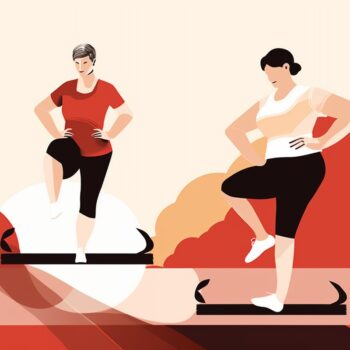 Menopause Macro Calculator
Menopause Macro Calculator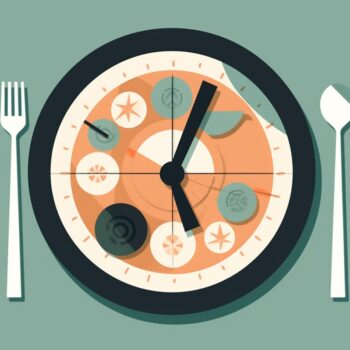 Intermittent Fasting Calculator
Intermittent Fasting Calculator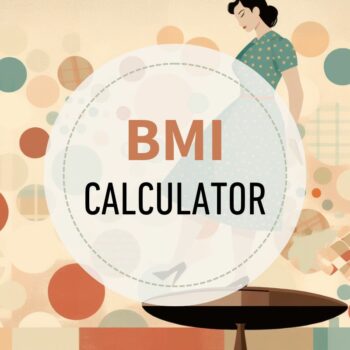 BMI Calculator
BMI Calculator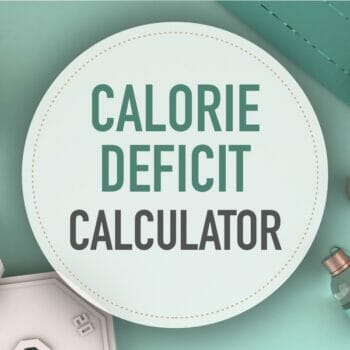 Calorie Deficit Calculator
Calorie Deficit Calculator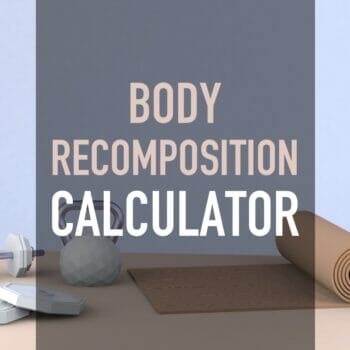 Body Recomposition Calculator
Body Recomposition Calculator
ive been trying find a reliable calculator. ive lost some weight having my macros at 1313, p115, c 75, f 63…ive plateaued and cant figure out what i need to change. i do crossfit 3 days a week. the calculator gave me really high carbs…any recommendations?
goal weight for me is 125, shooting for fat loss
Hi Devin, it seems like you need to be eating those carbs and eating more on your CrossFit days. You could use sedentary macros for rest days but should be using exercise adjusted macros for workout days. Otherwise you’re in too much of a deficit and this tends to slow results for many in my experience.
Goal weight or actual weight should be used in calculating your macros?
Hi Eric, Actual weight unless you have more than 50 pounds to lose. Then it should be your Lean Body Mass.
So when you reach the point where you then need to lose less than 50 lbs, then you plug in your actual weight & start using thag number ? I went from 1432 calories via the calculator using my actual weight down to 1205 calories using my lean body mass… so stick with 1205 since I need to lose more than 50 lbs?
Hi Christina, You seem like you are at the borderline so you should do the 1432. Is this sedentary or with exercise factored in?
This is sedentary. I got down to 117 before my youngest child and was lean doing p90x etc and had lost 75lbs to get there (that was my preggo weight from first born). I started wit counting calories then switched to high protein low carb when i got down to 132. I got super lean doing that. I think I switched because I was down to 800 cal a day and had plateaued again so needed to switch. Think I stared the diet at 1500 cals the first time. Now I have discovered macros 🙂 I’m up to 177 and want to be at 110 or 115… so that’s about 62-67 lbs I need to lose…
Although I will be working out…not sure how Consistent I can be to begin with or what approach im gonna take yet …
I think in your case, either will deliver results. 1432 may be a little easier to stick with since it allows you to eat more. Either way, you’ll still be in a calorie deficit. Start with 1432 and try it for a few weeks, just make sure that when you exercise you adjust your TDEE/macros to account for that.
Awesome I’ll start with 1432 then. Thank you bunches Ted, you rock!!
Hello, I was wondering if you could help me out, I’ve figured out my daily needs using the moderate activity level – as I’m an office worker 5 days a week, but I like to walk it into work which takes 25 mins each way, with five weight lifting days one boot camp cardio day, three HIIT workouts and one 5k and my rest day I’m using as an ‘active rest’ would this seem right?
I’m 175 cm and 69 kg
Worked out about 2110 calories? 🙂 I want to ensure I’m keeping as much muscle as possible
Hi Lauren, Choose the high protein setting and you should be able to maintain your muscle. Your exercise seems pretty varied so you may want to use a more fluid approach which is outlined in my MFP tutorial here. https://healthyeater.com/iifym-myfitnesspal-tutorial. Also, you should really give yourself a true rest day at least once a week.
Hi ted thanks for replying, I’m gonna use my moderate levels on exercise days and use my one full rest day as sedentary levels 🙂 will it be normal to experience bloating on higher calories? I already consume 2080 anyway and 10g less carbs 🙂
Great! I wouldn’t think so. In my experience bloating is caused by what you are eating more than how much.
Hi thanks for this macro calculator but I’m in need of help I’ve never done this macro counting but how can I figure what my high intake of carbs? Do I need this for carb cycling because that’s what I’m trying to do. Im 5’3” and 24 and weight 146lbs but I burn almost 500-600 cal on cardio and then do about 1 hr in weights. Any advice?
Hi Rachel, There’s no need to worry about carb cycling with flexible dieting. The only time you could consider eating less is by eating at your sedentary macros on rest days. It sounds like you would be very active on exercise days. Since you are new to all of this, I would highly recommend my book which explains everything step by step. https://healthyeater.com/macro-solution
Hi, thank you for all the great resources. I just recently started calculating macros and I though I had it all figured out but then I noticed that MFP adds macros to days I have exercise. So her is my question – If my macros are based on the sedentary lifestyle (desk job) and I have to eat 1400 calories per day, do I also eat the ecxercise calories on top of that? this got me really confused because the macros keeps changing daily if I have any activity.
Hey Kornelia, You’re so welcome, happy to help. Yes, you have to eat more calories according to how much exercise you do, otherwise, your calorie deficit will be unhealthy. See my MFP tutorial here: https://healthyeater.com/iifym-myfitnesspal-tutorial also please consider getting my book which has tons of info on how to be successful with IIFYM https://healthyeater.com/macro-solution
If I’m selecting moderate activity and eating back the exercise calories, isn’t that sort of like getting double credit for calories burned from exercising?
Hi Matt, when you select moderate activity it already factors those calories into your total, so you do not “eat them back again” Simply eat at the TDEE and macro amounts given on your exercise days.
I’m new to this macro calculating. I’ve used this calculator for almost 2 months now. I’m 25 yo 5’4″ started at 130lbs currently 125lbs when I last weighed myself probably about a ago. I have several questions #1 I want to lose about 15 more pounds of fat but maintain/gain muscle while doing so. Should I use the lose calculator or just the lose 10% calculator? #2 I am relatively sedentary but I do weight lift training 3 days a week for a hour or more. Do I select light activity? #3 Do I change my calories and macros on the days I do from the days I don’t workout? Thanks for the information ?
Hi Teresa, great job so far. It looks like you are already at your ideal weight so losing 25 pounds would put you way underweight. https://www.freedieting.com/tools/ideal_body_weight.htm. If you want to change your body composition then you’ll have to do lose 10, moderate activity on workout days and sedentary on rest days. Start measuring your body fat percentage as this is a better measure.
Hi! Does the flexible dieting meal plan ebook come in a vegetarian option?
Thanks 🙂
Hi Claudia, Flexible dieting doesn’t have a “vegetarian option” because the very nature of the diet allows you to eat anything as long as it fits your macros. You can choose plant sources to accomplish this. The meal plan does have meals featuring meat, but these could be swapped out. I always recommend that vegetarians find a good vegan protein supplement to ensure they’re getting their daily protein requirement.
Hi Ted,
I’ve been tracking for a few months and losing weight slowly but surely. I’ve recently reached a plateau and was wondering if I am using the right activity levels.
I am on my feet most of the day for work, averaging about 5,000-7,000 steps a day. Most of these work days, I also go to the gym for an hour and do a mix of cardio and weights. I have a rest day twice a week. One of the days is a work day and the other is a weekend (I use sedentary macros then).
What should I be using for work days and workouts?
What about the day when I just work and don’t workout?
Hope you can help, I’ve been so pleased with the results previously!
Hi Ellie, It seems like you would be moderately active on workout days. There could be several reasons for a plateau. How close to your goal weight are you? Have you been measuring body composition by using body fat percentage and by taking pictures? Your weight training can be skewing results due to muscle growth.
I think that might be the problem, I’ve only been using ‘lightly active’ macros when I’ve been at work and working out so should change that. I’m less than 10 pounds away from my goal weight and I haven’t lost weight in the last two months. I did wonder whether the strength training would build muscle and increase weight?
The last 10 are the hardest. Yes, try increasing your calories on workout days.
Iam a 31 year female. I weigh 139 and my goal is 130! I have been tracking my calories for almost 2 weeks at around 1250-1350 a day I do crossfit 3 days a week and a spin class 2 days a week. I haven’t lost any weight yet with my calories restriction. Your macro calculator recommended 1711 calories a day I feel like that would make me gain weight. Other then exercising at the gym for an hour 5 days a week I’m pretty in active except for house hold chores. Can you help me make since of what I should do
you need to eat more. by only eating 1300 calories your metabolism slows way down and you won’t burn them off as fast. if you don’t feed your body enough it goes into “starvation” mode in which it hordes all the food you do eat, thus not seeing any results despite being at such a calorie deficit. I know it seems counterintuitive but by eating more your metabolism will pick up and you will burn more. hope this makes sense and helps you…good luck!
Thank you!
Hi Jennifer, I do agree with John. Please see this article of mine. https://healthyeater.com/eat-to-lose-weight
Hey there,
Do you know what activity level I should select if I’m breastfeeding? Google says my 6 month old would drink around 30oz a day and making it would burn 20 calories per ounce – so 600 calories a day. I lost a lot of weight after having my baby so am looking to gain! I enjoy exercise and would like to start some resistance training.
TIA 🙂
Hi Megan, Please see this article https://healthyeater.com/pregnancy-breastfeeding-flexible-dieting-iifym
Hi Ted,
Just reading all the comments and you’re giving great advice so thought I’d ask my query 🙂
I’m a 30 yr old Vegan, 5’7 and weigh in at about 128lbs. Using hanging around 9 stone to 9 stone 2. My general activity would be moderate walk everyday with the dog for 30 mins to an hour. I workout 6 days a week. Burning from 200-600 calories a day depending on what I do. I don’t lift heavy yet so my workouts consist of weights no higher than 6kg dumbbells. I am not looking to bulk as such but gain some muscle and stay lean. My biggest issue is my stomach. Everywhere else leans up pretty well. Would you recommend I choose sedentary as well and add in my exercise as I do it? I don’t track the calories I burn during my walks but maybe I should start that too? The calculator tells me 2053 calories with a moderate activity level but maybe that’s too much? I just moved from Ireland to Australia so currently im not working and will be attending a fitness course in 2 weeks so my activity level will stay pretty active. Any advice would be amazing because there are so many difference opinions about all of this. Vegans that I have researched seem to eat crazy high carb such as 801010. I tried to eat a heavier carb diet the past 2 weeks and I’ve gained a little on my mid section. So some advice is totally appreciated. Anyway I’ll stop rambling 🙂
Thanks so much in advance,
Elisa.
Hi Elisa, I loved my time in Austrailia so that’s a great life change! I would say definitely try to track your exercise, it’s really the most precise method but it requires a little more diligence and yes, track your walking. I also always recommend that vegetarians or vegans find a good vegan protein supplement as it’s too hard to get enough protein without going over on carbs. The mid-section is always tough and a bulge is not always an indication of fat. It can also be your internal organs pushing against your abdominal wall. If your stomach looks flatter in the morning than it does later in the day, this is the case. Strengthening your lower abs can help. All the best and please check out my flexible dieting book. https://healthyeater.com/macro-solution
Hi Ted,
I can’t seem to figure out what I should put as my Activity Level to figure out how many calories I really should be eating. I have a desk job so I am sedentary most of the day. However, I weight lift 3x a week and do cardio 2-3x a week as well, usually going for 500 cal sessions.
I’m a male, 175 lbs, 5’9″ so at sedentary I’m eating about 1900 calories a day and I’m doing the higher protein options since I’m trying to build more muscle. To give you an idea of my fitness I can squat 235 lbs and deadlift 225. Not sure my body fat % though.
Hi Jorge, So your goal is to build lean muscle or do you also have some fat to lose?
My goal is both at the moment. I went from about 215 lobs to 175 lbs in about a year and so far I haven’t “lost weight” in the last 6 months but my physique has been improving bit by bit, so I know I’m burning fat and gaining muscle at almost the same rate. I would like to use more fat in general.
In that case, you should do moderately active on your exercise days and sedentary on your rest days. It seems like you would only have about 10 pounds to lose so it would probably be good for you to use “lose 10%”. All the best and if you would like additional coaching see the options here: https://healthyeater.com/macro-solution
Thank you so much for taking the time to answer my questions! I really appreciate the help! Definitely getting the book now!
Awesome and I recommend adding the members only forum where I’m standing by to help coach you and answer your questions. Glad I could help.